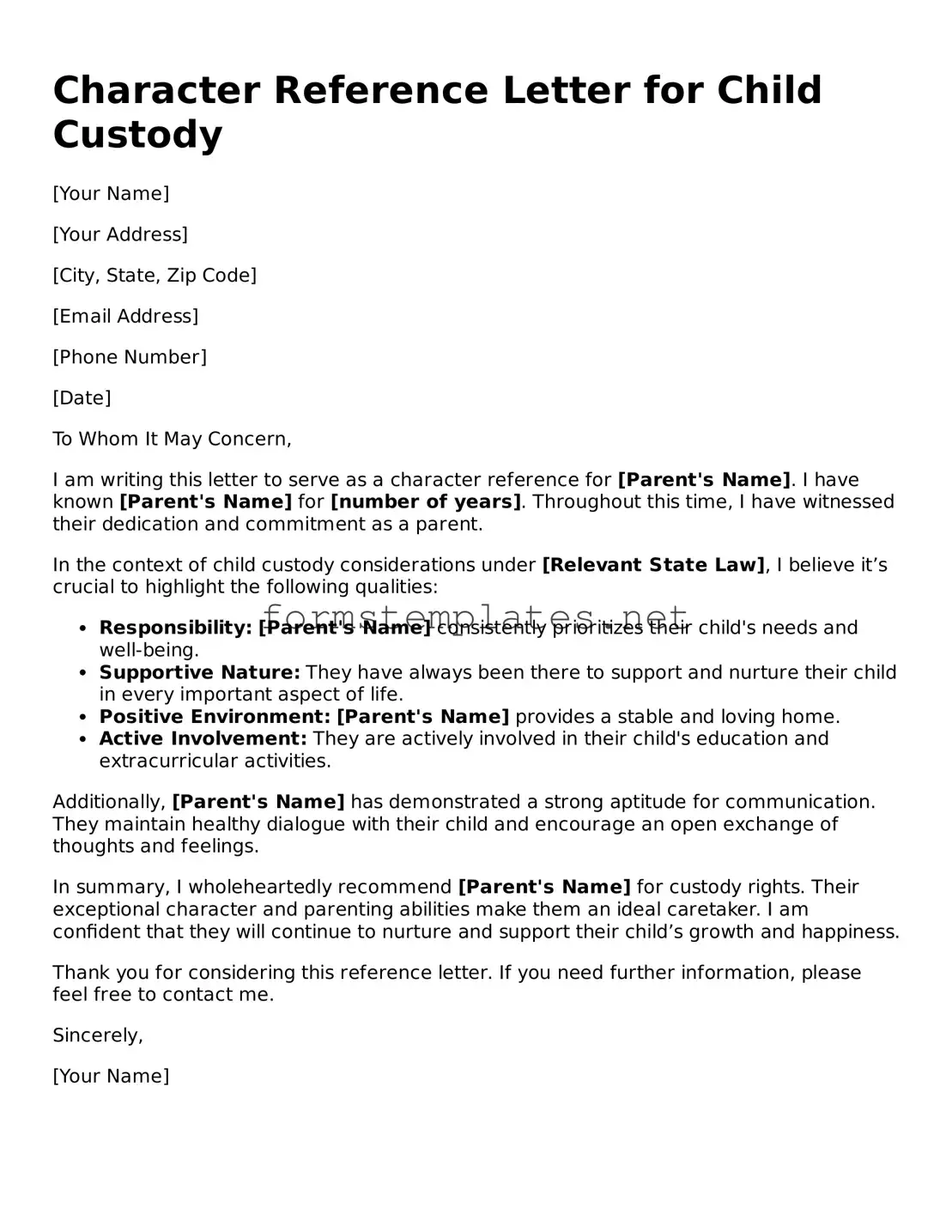What is a Character Reference Letter for Child Custody?
A Character Reference Letter for Child Custody is a document written by someone who knows a parent or guardian well. This letter aims to provide insight into the individual’s character, parenting abilities, and suitability for custody. It can be a valuable piece of evidence in custody disputes, helping the court understand the parent’s positive attributes and their relationship with the child.
Who should write a Character Reference Letter?
Typically, the letter should come from someone who has a close relationship with the parent seeking custody. This could include:
-
Family members
-
Friends
-
Teachers or coaches
-
Childcare providers
-
Community leaders or mentors
The writer should be able to speak to the parent’s character and parenting skills, providing a personal perspective that may resonate with the court.
What should be included in the letter?
A well-crafted Character Reference Letter should include the following elements:
-
Introduction:
The writer should introduce themselves and explain their relationship with the parent.
-
Character Traits:
The letter should highlight positive traits of the parent, such as responsibility, kindness, and dedication.
-
Parenting Skills:
Specific examples of the parent’s interactions with the child can illustrate their suitability for custody.
-
Conclusion:
A strong closing statement reinforcing the writer’s support for the parent’s custody request.
How long should the letter be?
The letter should be concise, typically one to two pages long. It should provide enough detail to be meaningful without overwhelming the reader. Clarity and brevity are key, ensuring that the main points stand out.
While there is no strict format, the letter should follow a professional structure. It should include:
-
The writer’s name and contact information
-
The date
-
The recipient’s name (if known, otherwise “To Whom It May Concern” is acceptable)
-
A clear and respectful tone throughout
Using a standard font and size, such as Times New Roman 12-point, can enhance readability.
Can the letter be handwritten?
While a handwritten letter can convey a personal touch, it is generally recommended to type the letter. A typed document is easier to read and appears more professional. If the writer chooses to handwrite it, they should ensure their handwriting is clear and legible.
How can this letter impact a custody case?
A well-written Character Reference Letter can significantly influence a custody case. It provides the court with a third-party perspective on the parent’s character and parenting abilities. This additional insight can help the judge make a more informed decision regarding custody arrangements, especially when the case involves contested issues.
Where should the letter be submitted?
The Character Reference Letter should be submitted as part of the custody case documentation. It is advisable to provide copies to both the court and the opposing party. Additionally, the letter may be presented during hearings or trials to support the parent’s case.
